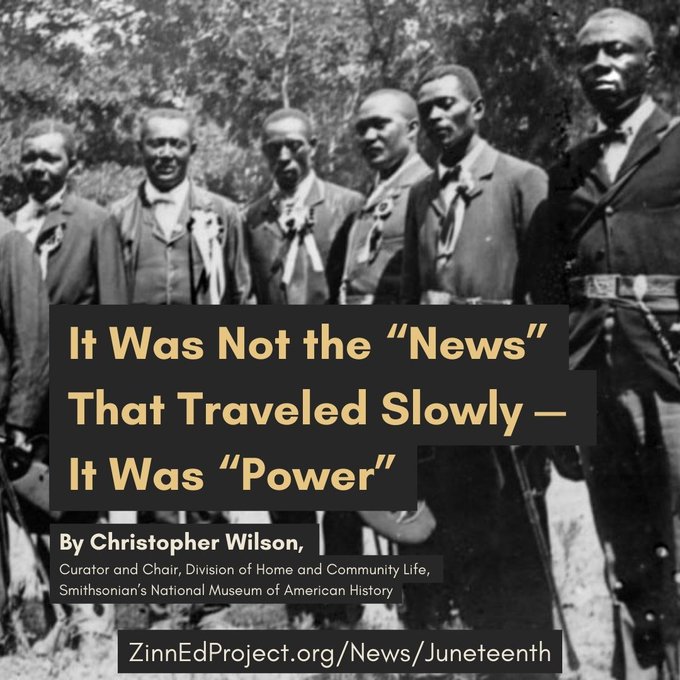Background on Juneteenth
Here are key points from scholars Greg Carr, Christopher Wilson, and Clint Smith on the history beyond the traditional textbook narrative about Juneteenth.Black Troops Spreading the Word with Every Marching Foot
By Howard University professor Greg Carr, transcribed from a Teach the Black Freedom Struggle Online Class
While General Granger read the Emancipation Proclamation off that veranda in Galveston, there were at least nine regiments of the United States Colored Troops marking their way through Texas, the last of the 10 states in the Confederacy to give up. Black troops, some of those same Black troops that have captured Richmond, those Black troops were now in Texas. So while Granger makes the formal announcement on June 19th, and a year later to the day, Black folks start celebrating Juneteenth formally, those Black troops are spreading the word with every marching foot as they come across the South.
June 19th is the official day marking these emancipation celebrations as it formally comes into the African awareness in Texas. But the dates are usually linked to whenever people found out they were free, which is why in Mississippi, in Alabama, in Arkansas, in Oklahoma, you might see an August date or July date. This is described in O Freedom: Afro-American Emancipation Celebrations by William Wiggins. What we see in Galveston, Texas, in 1865, is also connected to the Caribbean, described in Howard University professor Jeffrey Kerr-Ritchie’s book on Emancipation Day celebrations called Rites of August First: Emancipation Day in the Black Atlantic World. There is also Decoration Day.
We think about the roots of what become Memorial Day, the idea of honoring our ancestors who made the ultimate sacrifice, by placing flowers on their graves and you see that coming out of South Carolina. There’s a very good book called Conjuring Freedom that talks about that South Carolina regiment of Colored Troops and the beautiful Ed Dwight monument on the South Carolina State House grounds.


No comments:
Post a Comment